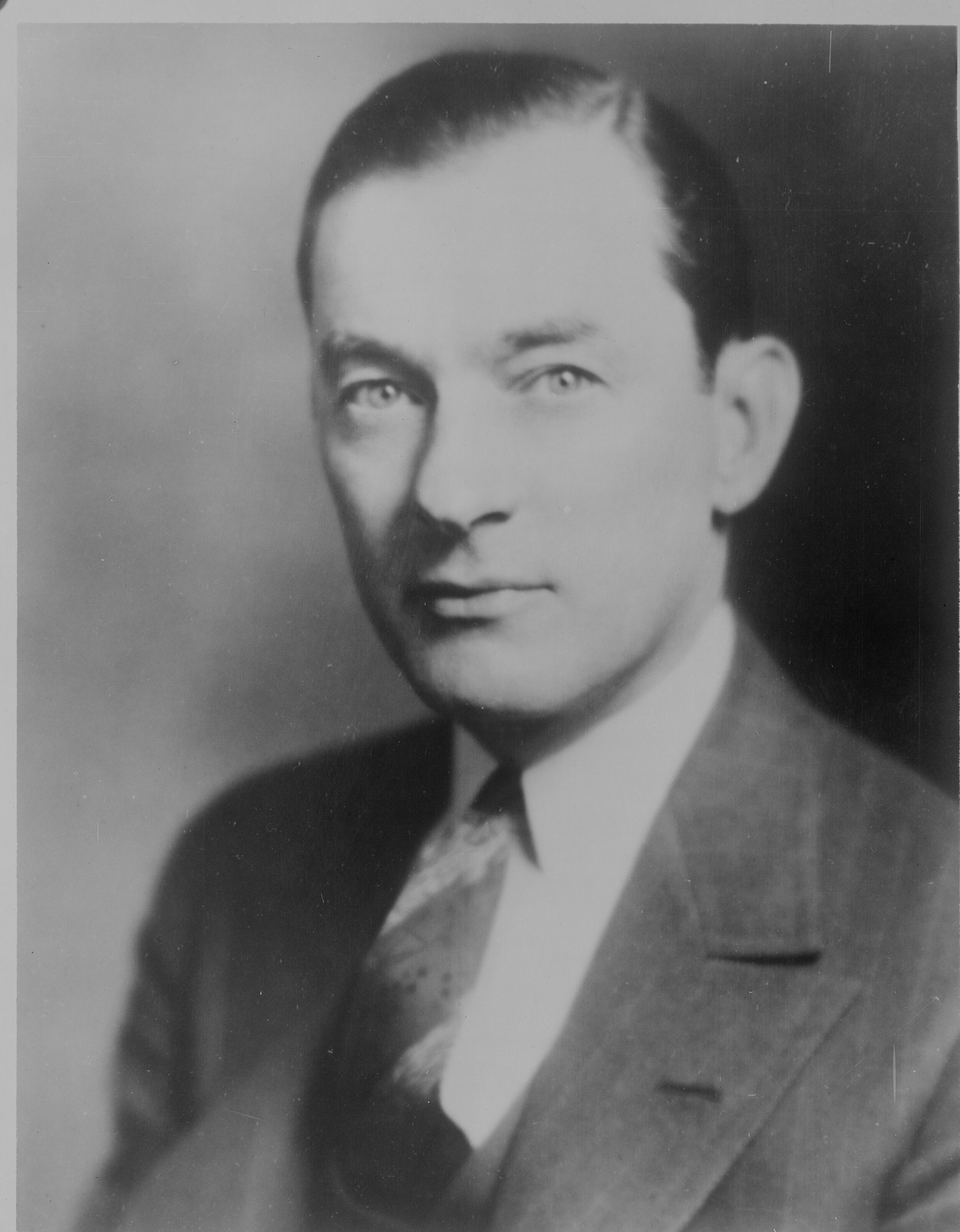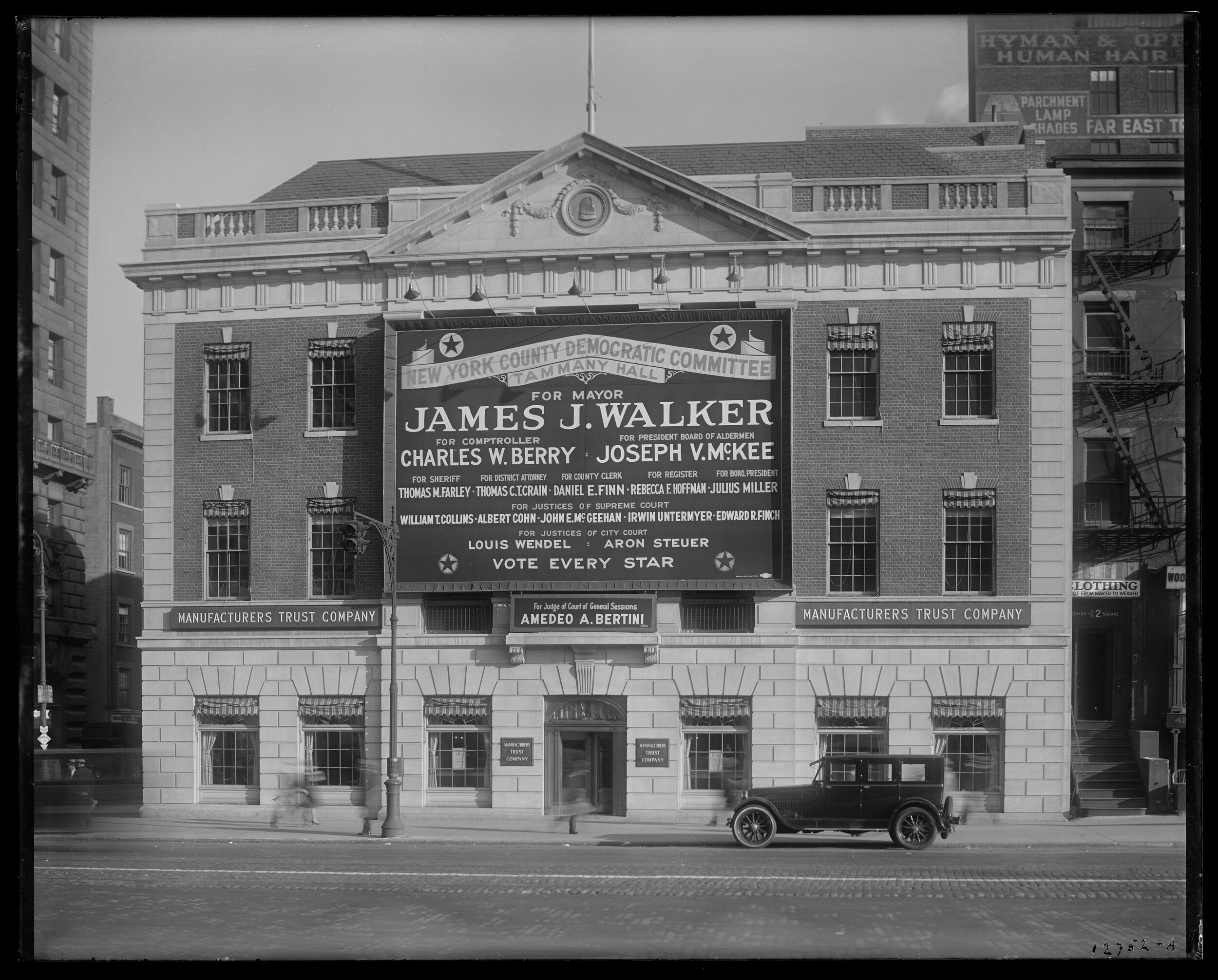Portrait, Mayor James J. Walker, March 2, 1932. Department of Bridges, Plant & Structures Photograph Collection, NYC Municipal Archives.
Mayor James J. Walker (1926-1932), a.k.a. “Jimmy” Walker, typically conjures images of a man about town enjoying the good life – the very symbol of jazz-age New York. Until the party ended: corruption, scandal, and a resignation in 1932. There is no debate about his downfall, but more recently historians have suggested that Walker and his administration might warrant a reassessment.
Our recent blog Unemployment in the Great Depression describes the Walker administration’s robust response to the rising tide of unemployment in the early years of the Great Depression. Many of their innovative ideas served as models for the eventual New York State efforts and the federal programs enacted by President Franklin Roosevelt after his election in 1932.
In another of our series highlighting the mayoral record collections in the Municipal Archives, this week we will take a look at Walker’s papers for examples of accomplishments that may have been overshadowed by his ignominious end.
Tammany Hall, 4th Avenue and 17th Street, October 28, 1929. Photographer: Eugene de Salignac. Department of Bridges, Plant & Structures Photograph Collection, NYC Municipal Archives.
Born in Manhattan to Irish-immigrant parents in 1881, James John Walker rose through the Tammany-dominated political landscape of the first decades of the 20th century, mentored by powerhouse Al Smith. His career began in the New York State Assembly in 1909. He won a seat in the Senate beginning in 1914, and in 1925, Democratic leaders chose him to run against incumbent Mayor John F. Hylan. He won the election, and took office on January 1, 1926.
The Mayor Walker collection is organized in the same three series as most 20th-century mayoral administrations: departmental correspondence; general correspondence, and subject files. Folder headings in the subject files provide a good snapshot of the important issues of each respective administration.
The Mayor’s Committee on Aviation celebrated the opening of Floyd Bennett Field in 1930 with a full slate of events including an “informal” dinner for members of the press in Manhattan. Mayor’s Committee on Aviation, Invitation, May 23, 1931. Mayor James Walker Collection, NYC Municipal Archives.
The 118 folders devoted to aviation, and in particular, Floyd Bennett Field are striking. It is apparent that Walker, like millions of Americans, was enthralled by the idea of air travel. During his mayoralty, Walker presided over no less than eight ticker-tape parades for pioneers in aviation. The massive reception on June 13, 1927, for Charles Lindbergh, celebrating his trans-Atlantic flight, attracted hundreds of thousands of spectators to lower Manhattan and made the ticker-tape parade famous around the world. It also made Lindbergh the focus of unprecedented world adulation, and the first media superstar of the 20th century. One year later, on July 6, 1928, Walker welcomed Amelia Earhart to City Hall after the ticker-tape parade acclaiming her achievement as the first woman to complete a trans-Atlantic flight. The parades were great fun of course, but Walker and his administration understood their greater purpose in promoting the possibility of commercial aviation.
Mayor Walker’s interest in aviation also manifested itself in support for construction of a municipal airport on 1,500 acres in Jamaica Bay. Named Floyd Bennett Field for the pilot who flew Admiral Richard Byrd over the North Pole in 1926, Walker presided over the dedication four years later, in 1931. Located more than an hour from Manhattan, it was soon eclipsed by the North Beach municipal airport built in Long Island Sound. North Beach airport was later renamed for Walker’s successor, Mayor Fiorello La Guardia, another very enthusiastic supporter of air travel.
Express Highway, Manhattan. Architectural schematic drawing, Sloan and Robertson, architects, 1928. Borough President Manhattan Photograph Collection, NYC Municipal Archives.
Express Highway, Manhattan. Looking north from Gansevoort Street, August 21, 1930. Borough President Manhattan Photograph Collection, NYC Municipal Archives.
Express Highway, Manhattan. Plaque. October 27, 1930. Borough President Manhattan Photograph Collection, NYC Municipal Archives.
Looking at the other end of the alphabetically-arranged subject files, the folders labeled ‘West-Side Improvement’ and ‘West-Side Highway,’ point to another of Walker’s accomplishments related to transportation—the elevated limited access highway built along Manhattan’s West Side. Officially called the Miller Elevated Highway, but better known as the West Side Highway, it ran from Rector Street to 72nd Street. The highway was noted for the architectural flourishes built into its design. Unfortunately, neglect and deferred maintenance over the ensuing decades led to its collapse in the 1970s.
Mayor James Walker (at right, with the dark overcoat) helps a young constituent throw the switch to power the new IND subway service, 1932. Municipal Archives Photograph Collection, NYC Municipal Archives.
Walker’s records concerning transportation did not end with the airplane and automobile, but also extended to rapid transit. Folders labeled transit are numerous and document his efforts to expand subway service. The Board of Transportation submitted a comprehensive plan for the Independent (IND) subway system to the Board of Estimate in 1925. The Mayor’s power over that body subsequently brought about approval of a revised plan in July 1927. Walker presided over the opening of the first section of the subway along Eighth Avenue in Manhattan on September 10, 1932.
Mayor Walker operated a steam shovel at the ground-breaking ceremony for the new psychiatric hospital in the Bellevue complex, June 18, 1930. Photographer: Robert A. Knudtsen. Mayor Walker Collection, NYC Municipal Archives.
Mayor Walker is also credited with the reorganization of City departments related to hospitals and sanitation. In 1929 he renamed the Street Cleaning Department the Department of Sanitation, and gave it control over solid-waste disposal functions throughout the city. This centralization brought about the first significant improvement in sewage treatment in decades. Walker also brought together under one head all of the city’s public hospitals.
Walker telegrammed Governor Franklin Roosevelt his expectations regarding the press announcement of his response to the corruption charges. Postal Telegraph, April 17, 1931. Page 1 of 2.
Postal Telegraph, April 17, 1931. Page 2 of 2. Mayor James Walker Collection, NYC Municipal Archives.
The popular mayor easily won re-election for a second term in 1929, defeating Fiorello LaGuardia. But the good times were over. Walker’s mayoral records are not useful for documentation of the other side of his time in office – the corruption scandals. However, there is one folder labeled ‘City Affairs Committee - Criminal Charges Against Mayor Walker and his Administration.’ The contents, although noteworthy, appear to be mostly congratulations Walker received for his “successful” response to the corruption charges. The primary engine of his downfall, Judge Samuel Seabury, and his investigation into the municipal malfeasance that ultimately led to Walker’s resignation, was a state-created entity; not city.
Mayor Walker’s affair with musical comedy and film actress Betty Compton further fueled his downfall. Walker and Compton married in France in 1933; they divorced in 1940. Walker died in New York City in 1946. Former Mayor Walker and Betty Compton on the deck of SS Normandie, June 17, 1936. Municipal Archives Photograph Collection, NYC Municipal Archives.
Mayor Walker’s subject files contain one other intriguing folder. It is labeled “Biography.” The contents are a typescript titled: “James J. Walker: Life and Accomplishment, 1881-1932,” by Sylvester B. Salzano. More than two-hundred pages in length, it is undated. Although it is difficult to assess its accuracy, the overall tone is very positive. Mr. Salzano’s conclusion makes it clear he was a fan: “…Walker is a phenomenon in his own right. He has endeared himself to his people. The wealthy, the poor, the soldier, the sailor,… all pay homage to this unusual character. He is loved and revered not only for his great brain, for his dignified position in the world, for his greatness as a Mayor, but for his bewitching and extremely enticing smile and personality… and for his everlasting willingness to rush to the aid of the destitute.”
We look forward to welcoming researchers back to the Municipal Archives when we re-open. And perhaps some will take a deeper dive into Mayor Walker’s papers. In the meantime, look for the installation of ArchivesSpace on the DORIS website (coming soon!); this tool will allow researchers to easily access finding guides and inventories of all Municipal Archives collections, including Mayor Walker.


